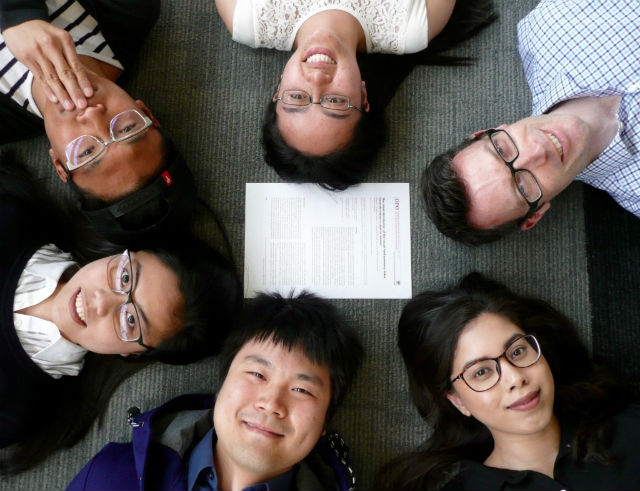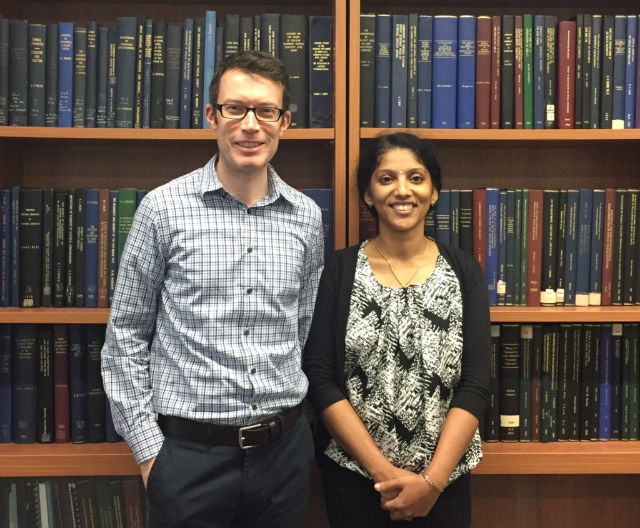Optological Laboratory
-
Lab Director

Dr Andrew J Anderson
Research Overview
The Optological Laboratory non-invasively investigates how the human eye and brain function, both in normal observers and those with eye disease. Although our understanding of neuroscience has been greatly enhanced through electrophysiological recordings from individual neurons and through computer imaging of gross neural activity across the brain, such information only tells us part of how the brain and eye work. Ultimately we also need to understand how the eye and brain behave in response to various forms of information, and to ascertain what functional limits exist in processing such information. Only by combining results from a range of different studies – including electrophysiological, imaging and behavioural studies – can a more complete understanding of neuroscience be achieved.
Our laboratory uses a range of techniques to determine how the eye and brain behave, many of which can be classed under the general heading of psychophysical methods. Sometimes our investigations involve visual targets used in clinical tests of vision, allowing us to better understand how such tests work and allowing more effective clinical tests to be developed. Other investigations use customised visual stimuli and special experimental protocols to examine how the eye transmits information to the brain, and also how the brain processes this information in order to make decisions. The laboratory is well equipped to undertake a wide range of behavioural experiments and so can address a broad range of behavioural questions, both in the clinical and basic sciences.

Optometry students Allan Cheng, Samantha Lau, Anne Le-Pham, Victor Liu and Farahnaz Rahman, with their published research study undertaken in the lab
Staff
- Dr Frank Giorlando (Postdoctoral Fellow)
- Ms Adela Park (PhD candidate)
- Lixing Xu (Master of Vision Science candidate)
- Sumeer Singh (co-supervised PhD candidate)
- Juan Sepulveda (co-supervised PhD candidate)
- Cassandra Brooks (co-supervised MPhil candidate)
Collaborators
- Professor RHS Carpenter - Gonville and Caius College, University of Cambridge, Cambridge, UK
- Dr Ruth Hogg - Centre for Vision & Vascular Science, Institute of Clinical Sciences, Royal Victoria Hospital, Belfast
- Dr Chris A Johnson - Department of Ophthalmology, University of Iowa, USA
- Assoc Prof Nikolaos Smyrnis, National and Kapodistrian University of Athens, Greece
- Dr Matthew Stainer - Griffith University, Queensland

PhD candidate (and now, Dr) Rashima Asokan (Elite School of Optometry, Chennai, India), visited the laboratory in 2016 as an Australian Government Endeavour Executive Fellow to undertake work on visual field progression
Research Projects
- Analysing visual field data in macular disease
- Comparing oculomotor decision-making models for halting inappropriate actions
- Getting back on track after the unexpected happens: decision making in predictable and unpredictable environments
- The effect of intraocular pressure on retinal ganglion cell function
- The role of fixational eye movements in spatial vision
- Understanding progressive vision loss in the eye disease glaucoma
Faculty Research Themes
School Research Themes
Key Contact
For further information about this research, please contact Lab Director Dr Andrew J Anderson
Department / Centre
Unit / Centre
Learning and Teaching Laboratory Visual Functions Laboratory Longitudinal investigation of neurovascular dysregulation and capillary angiopathy in young people with diabetes Optological Laboratory National Vision Research Institute Eye Movement Laboratory
MDHS Research library
Explore by researcher, school, project or topic.